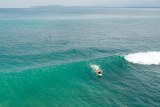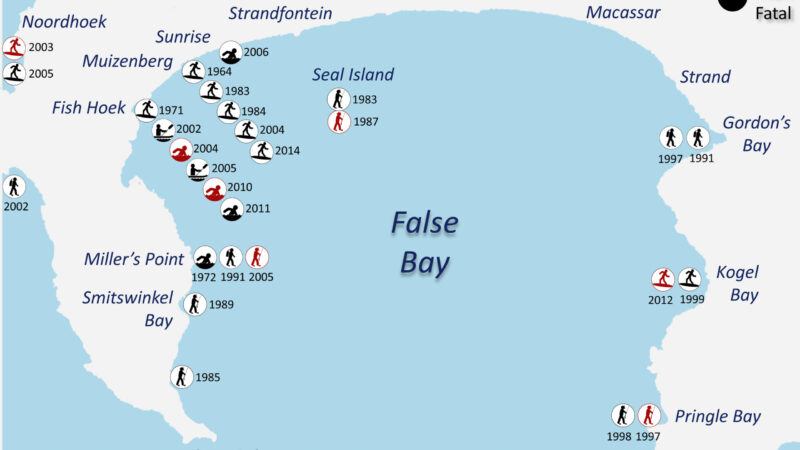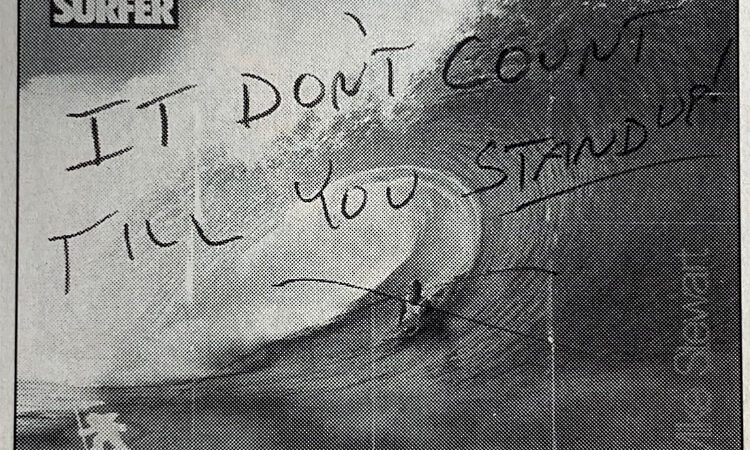If you’re anywhere near the coastline in Australia this summer, chances are at some stage you’ll end up in the ocean.
But if you’re not super familiar with waves, the thought of getting out there yourself can be pretty daunting.
If this is you, and you’re keen to try bodysurfing, or bodyboarding, read on for a few pointers that can help you get started.
Know your limits
Now, safety first.
Every year people drown in our oceans (there were 122 coastal drowning deaths reported in the most recent National Drowning report).
Remember it’s safest to swim on patrolled beaches between the red and yellow flags.
And know how to spot a rip current and what to do if you find yourself caught in one.
If you’re not a confident swimmer, choose small days where you’re still able to stand up behind the line-up – that is, on the ocean side of where the waves are breaking.
A good pair of flippers with leg leashes can help you not only swim better, but also catch a lot more waves.
If you’re really keen, most surf shops sell hand planes – small boards you can strap to one hand for buoyancy.
Know your wave, choose your beach
Waves break differently at different beaches.
It’s all to do with the topography of the coast – what direction it faces, the shape of the beach, the direction of the swell and the arrangement of the sandbanks near the shore.
Typically, beaches that rise from deep water to shallow quite quickly will have steeper, dumping waves, called shore breaks.
And sandbars running parallel to the beach will create close-outs –waves that break all at once in large sections, making them difficult to ride.
With bodysurfing, the idea is not to ride the wave straight in toward the beach, but to angle your body across the wave, staying on the open face ahead of the foam ball.
What you want to look for are waves that begin breaking at a point, then slowly break away from that point in one direction.
The slower the break of the wave, the easier it will be to stay ahead of the foam ball, and keep on the wave face.
You’ll often find this type of wave at headlands, but also on open beaches where sandbanks have formed at irregular angles to the shore.
Check out the video below, and pay attention to the slow, consistent break of the wave.
Time of day matters
Surf, like weather, is variable and a bit unpredictable.
But at this time of year, there are some regular patterns you can take advantage of.
Overnight, as the land cools and the ocean temperature remains consistent, winds will tend to drop and push offshore – blowing from the land out to sea.
Offshore winds create the best surf conditions because the wind blows up the face of the wave, smoothing the bumps and slowing the break.
Offshore winds tend to hang around in the early morning, making this the best time to get nice, clean waves.
As the day heats up, the land also gets warmer and the air above the land rises, creating a vacuum beneath it.
The cooler ocean air is then sucked in toward land, creating an onshore sea breeze, which chops up the surf.
Once the wind swings onshore, it usually hangs around until very late afternoon, when it might start to slow again as things cool down.
Where to sit
Once you’ve found your beach, and the conditions are good, the first thing to do is briefly study the waves from the shore.
Waves break when they hit shallow water, so there will be one or several points along the beach where the waves consistently begin to break, as they hit the outermost points of the sandbanks.
Once you’ve located a point where the waves consistently begin to break, you want to position yourself on the shoulder of that point, or just next to it on the side where the wave face is unbroken.
The idea is not to paddle and let the wave crash on you.
Instead, you want to swim as hard as you can, with your head down, and be picked up on the steep open face of the wave next to the section that is breaking.
As you feel the wave start to carry you, you can stop paddling and turn your body across the open wave face.
The aim is to outrun the whitewater for as long as possible.
Extend your right arm if you’re turning right across the wave face, or your left arm for left.
You want to use your palm on the surface of the water for buoyancy, and lift your head out of the water to see where you’re going.
Old-fashioned courtesy
It’ll take a while to get the hang of it, especially if you’re new to the ocean.
But the longer you spend in the water, the more you’ll learn to read the waves and figure out what works and what doesn’t.
While you’re out there, there are a few basic rules of etiquette that are good to observe if you’re keen to avoid conflict.
- The most important rule, give way to the inside. (That is, the person on the wave that is closest to the peak where the wave initially broke, has right of way)
- When you’re paddling out, try to keep out of the way of people catching waves
- Once you get out the back, wait your turn, don’t paddle past people straight to the inside position.
Check out the video for a good, simple breakdown of surf etiquette.
That’s it. Have fun.






Recent Comments